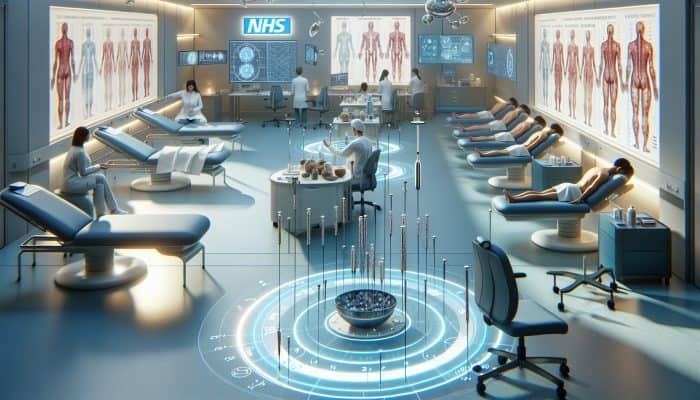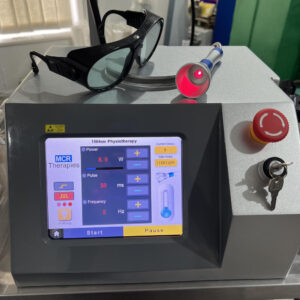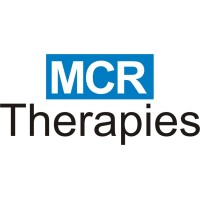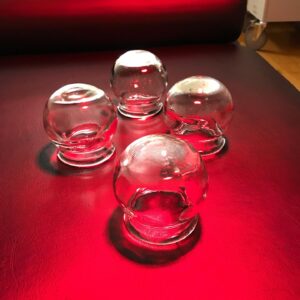Unlock the Healing Power of Acupuncture: Transform Your Health in the UK
Understanding the Fundamentals of Acupuncture and Its Mechanisms

Acupuncture is an esteemed therapeutic technique that has its roots in traditional Chinese medicine. It involves the skilled insertion of thin needles into specific acupuncture points on the body, aimed at restoring the natural flow of energy, known as Qi. This practice promotes healing and overall wellness by addressing imbalances in the body. In the UK, acupuncture has gained significant traction as a holistic health solution, celebrated for its numerous benefits for both physical and mental well-being. Individuals commonly seek acupuncture for various issues, including stress relief, pain management, and general health improvement. The primary acupuncture points targeted in the UK include:
- LI4 (Hegu): Renowned for its efficacy in alleviating pain and mitigating stress.
- ST36 (Zusanli): Highly regarded for boosting energy levels and enhancing digestive health.
- SP6 (Sanyinjiao): Commonly used to address women’s health concerns and maintain hormonal balance.
- HT7 (Shenmen): Frequently targeted to alleviate anxiety and improve sleep quality.
- PC6 (Neiguan): Effective in treating nausea and emotional stress.
- GB20 (Fengchi): Utilised for relieving headaches and neck tension.
- BL23 (Shenshu): Linked to kidney health and overall vitality.
- Yintang: Known as the “third eye” point, effective for calming mental activity.
Tracing the Historical Journey of Acupuncture in the UK
The practice of acupuncture first made its way to the UK in the 1970s, as practitioners began to recognise its potential for enhancing health and wellness. Initially, it faced considerable scepticism; however, over time, it has gained credibility, evolving into a respected alternative therapy within the healthcare community. The establishment of the British Acupuncture Council (BAC) has been instrumental in regulating practitioners, ensuring they adhere to rigorous training and ethical standards. Today, the increasing acceptance of acupuncture in the UK reflects a growing trend towards integrative healthcare, with many individuals exploring alternatives to conventional medical treatments.
Acupuncture, rooted in ancient Chinese medical practices, has become a vital component of many people’s health routines in the UK. As public awareness of its benefits expands, practitioners are focusing more on ongoing education and refining their skills, demonstrating the evolving nature of acupuncture as a credible health modality. The combination of time-honored techniques with modern research fosters ongoing discussions surrounding its benefits and applications within contemporary society.
How to Locate a Certified Acupuncturist in the UK
Finding a qualified acupuncturist in the UK is crucial for receiving safe and effective treatment. Begin by verifying credentials with the British Acupuncture Council, which maintains a comprehensive directory of registered practitioners who have undergone extensive training and adhere to high ethical standards. Additionally, recommendations from healthcare providers can guide you to respected practitioners, while personal referrals from friends or family often lead to trusted choices.
When searching for an acupuncturist, it’s beneficial to ask about their qualifications, experience, and areas of expertise. Many practitioners offer initial consultations, providing an opportunity to discuss your health concerns and treatment goals. This preliminary conversation allows you to evaluate the practitioner’s approach and ensures that you feel comfortable with their treatment style. In the UK, many acupuncturists also integrate various modalities, such as herbal medicine and dietary advice, into their practice, creating a comprehensive health strategy tailored to your specific needs.
Exploring the Key Benefits of Acupuncture for Health Improvement in the UK
Acupuncture is increasingly acknowledged in the UK for its extensive therapeutic benefits. Many individuals seek acupuncture for pain relief, as it has been shown to be effective in alleviating conditions such as migraines, back pain, and joint discomfort. This treatment stimulates the body’s innate healing processes, leading to enhanced overall wellness.
Beyond its role in pain management, acupuncture is well-known for its effectiveness in stress reduction. As modern-day life grows increasingly demanding, many individuals turn to acupuncture to manage anxiety and foster relaxation. The calming effects of acupuncture can significantly improve mental health and emotional stability, making it a popular choice for those pursuing holistic wellness.
Moreover, numerous studies and patient testimonials support the effectiveness of acupuncture in promoting overall health. Many patients report feeling revitalised, with increased energy levels and improved sleep quality after treatment. This holistic perspective aligns with the growing trend in the UK towards integrative healthcare, as patients seek therapies that address both physical and emotional health.
Acupuncture’s Role within the NHS Framework: Understanding Its Integration
The National Health Service (NHS) occasionally includes acupuncture as a complementary therapy, particularly for managing chronic pain. However, availability can greatly differ across various regions in the UK. While some NHS trusts integrate acupuncture into their pain management strategies, others may lack the resources to offer such services, often prompting patients to seek private practitioners.
In recent years, there has been a concerted effort to recognise acupuncture as a valuable treatment option within the NHS system. Patients who benefit from acupuncture frequently report enhanced pain control and an improved quality of life. The expanding body of evidence supporting the effectiveness of acupuncture may lead to its broader incorporation into NHS practices, ultimately increasing accessibility for those who could benefit from this holistic approach.
Gaining Expert Insights on Acupuncture for Aging Gracefully
Identifying Conditions Acupuncture Successfully Treats in Older Adults
Acupuncture has demonstrated effectiveness in treating numerous age-related conditions, making it an invaluable therapeutic option for older adults. Common issues include arthritis, insomnia, and chronic pain. In the UK, many practitioners specialise in addressing these concerns, highlighting acupuncture’s potential to significantly enhance the quality of life for seniors.
For instance, individuals suffering from arthritis often experience substantial relief through acupuncture treatments. Techniques such as needle insertion at specific points can help reduce inflammation and improve joint mobility, enabling patients to carry out daily activities with greater ease. Similarly, seniors struggling with insomnia may find that acupuncture assists in regulating their sleep patterns, leading to more restorative nights and improved daytime functionality.
Expert analysis suggests that regular acupuncture sessions can alleviate chronic pain symptoms, reducing reliance on medications that may have undesirable side effects. In the UK, practitioners frequently report enhanced patient outcomes, with many older adults experiencing increased vitality and overall well-being following consistent acupuncture treatments. This holistic approach addresses multiple health facets, from physical discomfort to emotional balance, facilitating a more graceful aging journey.
Determining the Ideal Frequency of Acupuncture Treatments for Older Adults
The frequency of acupuncture treatments for older adults varies based on individual health needs and responses to therapy. Practitioners typically recommend a treatment schedule ranging from weekly to monthly sessions, especially when initiating treatment for specific conditions. This personalised approach allows acupuncturists to monitor progress and adjust treatment plans as necessary.
Initially, more frequent visits may be advisable to establish the benefits of acupuncture. As patients begin to notice positive changes, the frequency can be modified. For some, bi-weekly or monthly sessions may suffice to maintain the health improvements achieved. Listening to one’s body is critical; older adults should communicate openly with their acupuncturist regarding how they feel and any changes they observe.
Ultimately, the goal is to establish a sustainable plan that supports ongoing wellness. Regular acupuncture can significantly enhance quality of life, empowering older adults to remain active and engaged within their communities. As individuals begin to appreciate the cumulative benefits of treatment, they often find themselves increasingly motivated to incorporate acupuncture into their health routines, contributing to a more graceful aging experience.
Expert Recommendations on Acupuncture and Aging in the UK
Experts in the UK consistently underscore acupuncture’s crucial role in promoting overall well-being among older adults. Many practitioners advocate for its benefits, emphasising its potential to improve the quality of life for seniors. This perspective is bolstered by real-world examples of successful acupuncture interventions across the country.
For instance, anecdotal evidence from practitioners indicates that numerous patients undergoing regular acupuncture report improvements in both physical and mental health. These benefits often manifest as reduced pain, better sleep, and enhanced emotional stability. Such improvements can be particularly impactful for older adults, who may face various age-related challenges.
Experts suggest that acupuncture is not only effective for managing specific conditions but also plays a vital role in fostering a proactive approach to health. By integrating acupuncture into their routines, older adults can take charge of their well-being, leading to a more vibrant and fulfilling life. The commitment to ongoing education and adaptation among UK acupuncturists further strengthens the treatment’s position as a valuable resource for the aging population.
Enhancing Mental Well-being in Seniors Through Acupuncture
Acupuncture has shown remarkable potential in improving mental well-being among older adults. By alleviating stress and anxiety, acupuncture can be particularly beneficial for seniors, who often encounter various emotional challenges as they age. The practice encourages relaxation by promoting the release of endorphins and other neurotransmitters associated with happiness and calmness.
Experts in the UK have observed that acupuncture can assist in managing conditions like depression, which is prevalent among older populations. By addressing both the physical and emotional dimensions of health, acupuncture offers a holistic approach that resonates with seniors seeking comprehensive care. Many practitioners in the UK report positive outcomes, with patients expressing a renewed sense of hope and emotional stability after treatments.
Furthermore, acupuncture can foster social connections, which are crucial for mental health. By attending appointments and interacting with practitioners, older adults can combat feelings of isolation and loneliness. This aspect of care not only meets their physical needs but also enriches their emotional landscape, contributing to an overall sense of well-being.
Exploring the Extensive Benefits of Acupuncture for Aging Gracefully
Can Acupuncture Truly Enhance Your Skin Health?
Acupuncture can have a significant positive impact on skin health by stimulating collagen production and enhancing blood circulation, resulting in healthier and more youthful-looking skin. This aspect of treatment is gaining popularity among older adults seeking to rejuvenate their skin naturally.
Several notable benefits of acupuncture for skin health include:
- Increased collagen production: Helps maintain skin elasticity and diminish signs of aging.
- Enhanced blood circulation: Promotes a healthy glow and delivers essential nutrients to skin cells.
- Improved hydration: Can alleviate dryness, leading to a more supple skin texture.
- Reduction in fine lines: Regular treatments may diminish the appearance of wrinkles.
- Balancing skin conditions: Effective for treating conditions such as acne, rosacea, and eczema.
- Stress relief: Reduces stress levels, which can positively influence skin health.
- Holistic approach: Addresses underlying health issues that may affect skin vitality.
In the UK, many skincare professionals are beginning to recognise the value of integrating acupuncture into their skincare routines. By incorporating these age-old practices, individuals can achieve a more radiant complexion and overall skin rejuvenation, particularly appealing to those seeking natural alternatives to cosmetic procedures.
Improving Joint Mobility: The Role of Acupuncture
Acupuncture plays a vital role in enhancing joint mobility for older adults, particularly those suffering from conditions such as arthritis. By reducing inflammation and improving joint lubrication, acupuncture can assist individuals in maintaining mobility and alleviating pain associated with age-related joint issues.
Many practitioners in the UK emphasise acupuncture’s ability to stimulate the body’s natural healing processes, facilitating improved joint function. This treatment can alleviate stiffness and discomfort, enabling seniors to engage in physical activities they might otherwise find challenging. For instance, individuals who have struggled with mobility may rediscover joy in hobbies such as walking, gardening, or dancing.
Acupuncture can also promote muscle relaxation, which aids joint movement. By strategically placing needles near affected areas, practitioners can target specific muscles and connective tissues, relieving tension and enhancing flexibility. This holistic approach not only addresses immediate concerns but also contributes to long-term joint health, allowing older adults to adopt a more active lifestyle.
Enhancing Mental Well-being through Acupuncture
Acupuncture can significantly improve mental well-being, particularly among older adults. Research indicates that the practice can reduce stress, anxiety, and depression, thereby contributing to improved mental health and emotional balance. The calming effects of acupuncture can help older individuals manage the emotional complexities that often accompany aging.
Practitioners in the UK frequently report that patients experience mood elevation and a sense of tranquility after treatments. By targeting specific acupuncture points linked to mental health, practitioners can facilitate the release of endorphins, the body’s natural mood enhancers. This approach not only aids in managing existing conditions but also fosters resilience against future emotional challenges.
Moreover, by creating an environment of relaxation and self-care, acupuncture encourages older adults to prioritise their mental health. Engaging in such practices can lead to a more fulfilling and balanced life, as seniors learn to navigate the intricacies of aging with empowerment and inner peace. This holistic approach to mental well-being is essential for aging gracefully and significantly enhances overall quality of life.
In-Depth Research Insights into Acupuncture for Graceful Aging
What Do Recent Studies Reveal About Acupuncture and Pain Management?
Research conducted in the UK consistently indicates that acupuncture can substantially reduce chronic pain in older adults. Numerous studies highlight its effectiveness in improving the quality of life for patients experiencing persistent discomfort, leading to a decreased reliance on pain medications. This shift is particularly significant given the potential side effects associated with long-term medication use.
Acupuncture is believed to function by stimulating the body’s natural pain-relieving mechanisms, including the release of endorphins. This process alleviates pain and discomfort, enabling patients to engage more fully in their everyday lives. Testimonials from countless patients in the UK affirm the positive effects of acupuncture on pain management, showcasing its role as a complementary therapy that enhances traditional medical treatments.
As the body of research validating acupuncture’s effectiveness continues to grow, more healthcare providers are beginning to incorporate it into pain management strategies. This integration not only offers patients a comprehensive approach to care but also promotes a better understanding of the multifaceted nature of pain and its treatment.
How Effectively Does Acupuncture Enhance Sleep Quality?
Studies reveal that acupuncture can significantly improve sleep quality, especially among older adults who often face challenges with insomnia. This practice aids in regulating the body’s circadian rhythms and may alleviate insomnia symptoms, resulting in more restorative sleep.
In the UK, many practitioners report positive outcomes for patients seeking acupuncture to address sleep disturbances. By targeting specific acupuncture points associated with relaxation and sleep promotion, practitioners can assist individuals in overcoming their insomnia challenges. Patients often describe a sense of calm and a better ability to both fall asleep and stay asleep following treatments.
Furthermore, improved sleep quality contributes to overall health and well-being, allowing older adults to feel more refreshed and energetic during the day. This increased vitality can lead to enhanced social interactions and greater engagement in daily activities, further enriching their quality of life. As awareness of acupuncture’s benefits continues to grow, more individuals are turning to this ancient practice to support their sleep health.
Can Acupuncture Enhance Immune Function in Seniors?
Emerging research suggests that acupuncture can improve immune function by stimulating the production of immune cells, which is particularly beneficial for older adults whose immune systems may be compromised. Regular acupuncture treatments can strengthen the body’s natural defenses, assisting seniors in maintaining better overall health.
In the UK, practitioners often incorporate acupuncture into a preventative health strategy, encouraging patients to enhance their immune systems through holistic means. This approach aligns with the growing trend of prioritising wellness and proactive health measures, enabling older adults to take charge of their health.
Moreover, improved immune function leads to a better quality of life, reducing the frequency and severity of illnesses. Seniors who include acupuncture in their health routines frequently report feeling more resilient against common ailments, which enhances their capacity to participate in social activities and enjoy life to the fullest.
Can Acupuncture Support Cognitive Function Improvement?
Research has indicated that acupuncture may enhance cognitive function in older adults by improving blood flow to the brain and reducing oxidative stress. These factors are critical for maintaining mental sharpness and cognitive health as individuals age.
In the UK, studies have produced promising results, with many older adults experiencing improvements in memory, focus, and overall cognitive health after regular acupuncture treatments. This practice not only addresses immediate concerns related to cognitive decline but also supports long-term brain health, allowing seniors to maintain an active and engaged lifestyle.
Additionally, the holistic nature of acupuncture promotes a balanced approach to cognitive health, which encompasses emotional and physical well-being. By fostering relaxation and reducing stress, acupuncture creates an environment conducive to optimal cognitive function. As awareness of these benefits grows, more individuals are seeking acupuncture as part of their cognitive wellness strategies.
How Can Acupuncture Contribute to Healthier Skin?
Studies indicate that acupuncture can enhance skin elasticity and hydration in older adults, contributing to a more youthful appearance and facilitating skin rejuvenation. This practice is becoming increasingly popular among those seeking natural alternatives to invasive cosmetic procedures.
Acupuncture’s ability to stimulate blood flow and collagen production is vital in promoting skin health. In the UK, practitioners often focus on specific acupuncture points that target skin vitality, addressing issues such as dryness, wrinkles, and uneven skin tone. Many patients report noticeable improvements in skin texture and overall appearance following regular sessions.
This approach not only enhances physical appearance but also boosts self-confidence and emotional well-being. As individuals embrace acupuncture for skin health, they often feel more empowered to take control of their beauty and wellness routines. This holistic strategy aligns seamlessly with the concept of aging gracefully, as individuals learn to care for their skin while fostering a positive mindset.
Essential Steps for Integrating Acupuncture into Your Aging Journey
Preparing for Your First Acupuncture Session: A Comprehensive Guide
Preparing for your first acupuncture session can significantly enhance your experience, ensuring that you derive maximum benefit from your treatment. Begin by wearing loose, comfortable clothing that allows easy access to acupuncture points. Staying adequately hydrated before your appointment is essential, as it facilitates the flow of energy throughout the body.
Before your session, it is crucial to discuss any health concerns or medical conditions with your acupuncturist. Being transparent about your health history enables them to tailor the treatment to your specific needs. Additionally, if you are currently taking any medications or undergoing other therapies, it is imperative to inform your practitioner, as this information can influence your treatment plan.
Arriving at your appointment with an open mind and a willingness to relax is equally important. Acupuncture is designed to promote calmness and well-being; thus, approaching your treatment with a positive attitude can enhance the overall experience. By following these steps, you can lay the groundwork for a successful first acupuncture session, paving the way for an enriching journey towards graceful aging.
What to Expect During Your Acupuncture Treatment
During an acupuncture treatment, you can expect a calm and relaxing environment. The practitioner will begin by discussing your health concerns and conducting an assessment, which may involve a brief examination of your pulse and tongue to determine the best approach for your treatment.
Once the treatment commences, you will lie comfortably while the acupuncturist inserts thin needles at specific points on your body. It is common to feel a sensation of pressure or warmth at the insertion sites; however, most patients find the experience quite relaxing. Treatments generally last between 30 to 60 minutes, during which you may be encouraged to focus on your breathing and allow your body to unwind.
Countless individuals report a sense of deep relaxation and even drowsiness during and after their sessions. This tranquil state showcases the calming effects of acupuncture. After the treatment, your practitioner may provide recommendations for post-session care, which could include hydration or gentle movement to help integrate the benefits of the session. This holistic experience establishes a foundation for enhanced well-being, making acupuncture a valuable addition to your health routine.
Maintaining the Benefits of Acupuncture at Home
Maintaining the benefits of acupuncture at home involves adopting practices that bolster your overall health and well-being. Regular exercise is vital; engaging in activities such as walking, yoga, or tai chi can help keep the body active and aligned after your acupuncture sessions. These gentle movements can further amplify the effects of treatment by promoting circulation and flexibility.
Additionally, adhering to a balanced diet rich in fruits, vegetables, whole grains, and lean proteins is essential for sustaining energy levels and overall health. Incorporating stress management techniques, such as meditation or mindfulness exercises, can also be advantageous. These practices cultivate a sense of calm and resilience, complementing the relaxation achieved through acupuncture.
Furthermore, consider establishing a routine that includes regular acupuncture visits to maintain optimal health. Frequent sessions can reinforce the benefits of your at-home practices, creating a comprehensive approach to graceful aging. By prioritising your health and well-being in these ways, you can maximise the positive effects of acupuncture and enjoy a more vibrant life.
Success Stories Highlighting the Benefits of Acupuncture for Graceful Aging in the UK
Case Study: Finding Relief from Arthritis Through Acupuncture
A compelling case study from a UK resident illustrates the transformative effects of acupuncture in alleviating arthritis symptoms. After enduring persistent joint pain and mobility challenges for several years, the individual sought acupuncture as a complementary treatment. Regular sessions focused on targeted acupuncture points aimed at reducing inflammation and pain associated with arthritis.
Over several weeks, the patient reported significant improvements in pain levels and mobility. The acupuncture treatments not only alleviated discomfort but also enhanced the individual’s capacity to participate in daily activities, such as walking and gardening, leading to an overall improvement in quality of life. This real-world example underscores acupuncture’s potential to provide meaningful relief for older adults managing chronic conditions.
Testimonial: How Acupuncture Enhanced Quality of Life
A senior resident in the UK shared their personal account of how acupuncture positively impacted their overall quality of life. Initially seeking treatment for chronic pain, the individual discovered that regular acupuncture sessions also led to enhanced sleep and reduced anxiety levels. Over time, they noticed a marked improvement in their emotional well-being, enabling them to engage more actively in social activities and family gatherings.
This positive transformation in their health reflected not only physical improvements but also a revitalised sense of purpose and joy in life. The testimonial highlights how acupuncture can holistically address multiple health aspects, making it a valuable resource for older adults striving for graceful aging and improved quality of life.
Exploring the Long-Term Benefits of Acupuncture for Aging Individuals
The long-term benefits of acupuncture for aging individuals in the UK are profound and multifaceted. Many seniors who incorporate acupuncture into their health routines report sustained pain relief and improved mental health, contributing to enhanced overall well-being. This holistic practice encourages a lifestyle that prioritises self-care and emotional balance, essential components of graceful aging.
Moreover, long-term acupuncture patients often experience heightened vitality, enabling them to maintain active lifestyles and engage fully in their communities. The commitment to regular treatments fosters a deeper connection to one’s health, empowering older adults to navigate the challenges of aging with resilience and grace. These enduring benefits underscore acupuncture’s role as an invaluable ally in the quest for a fulfilling and vibrant life.
Frequently Asked Questions About Acupuncture
What is acupuncture?
Acupuncture is a traditional Chinese medicine practice that involves inserting thin needles into specific points on the body to balance energy flow and promote healing.
Is acupuncture safe for older adults?
Yes, acupuncture is generally safe for older adults when administered by a qualified practitioner. It is essential to disclose any health concerns prior to treatment.
How long does an acupuncture session last?
An acupuncture session typically lasts between 30 to 60 minutes, depending on individual needs and treatment plans.
How many sessions of acupuncture do I need?
The number of sessions required varies based on individual health goals. Initial treatments may be weekly, transitioning to monthly sessions as necessary.
Can acupuncture help with arthritis pain?
Yes, acupuncture can provide significant relief for arthritis pain by reducing inflammation and improving joint mobility.
Will I feel pain during acupuncture?
Most individuals experience minimal discomfort during acupuncture, often described as a mild sensation of pressure or warmth at the insertion sites.
How does acupuncture improve mental health?
Acupuncture can enhance mental health by reducing stress and anxiety, promoting relaxation, and supporting emotional balance.
Can I continue my regular medications while receiving acupuncture?
Yes, you can typically continue your medications, but it is crucial to inform your acupuncturist about all your current treatments and medications.
How does acupuncture improve skin health?
Acupuncture can enhance skin health by stimulating collagen production, increasing blood circulation, and improving hydration, leading to a more youthful appearance.
Where can I find a qualified acupuncturist in the UK?
You can find a qualified acupuncturist by checking the British Acupuncture Council’s directory or seeking recommendations from healthcare providers.
Connect with us on Facebook!
The Article: Acupuncture for Aging Gracefully: A UK Guide appeared first on https://mcrtherapies.co.uk
The Article Acupuncture for Aging Gracefully: Your UK Resource Was Found On https://limitsofstrategy.com

















 Laser treatment is a great way to improve results and speed up the healing process in sports medicine.
Laser treatment is a great way to improve results and speed up the healing process in sports medicine.


